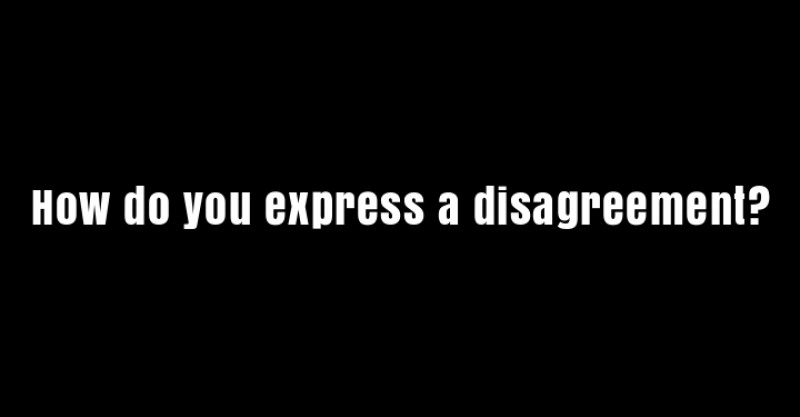How do you express a disagreement?
These days it seems that in social networks, only negative comments are published. If a new initiative is launched, there are negative critics about why it is done and why it was not done otherwise. Also, there are those who aim to point out what is missing to complete it and that without it is useless. If you decide not to implement an idea, critics can only say that it was a bad idea. These comments are created without thinking, the product of elaborating a critic in 5 minutes, and dumped forever in social media. Without considering the time and effort of the volunteers, who in their precious free time, collaborate with the project.
Criticism and disagreement are fundamental to being able to improve and be part of a collaborative process. A very close person once told me that criticisms are opportunities to improve. So, to improve the level of the current discussion, we need to develop better critiques.
I am a witness of the transformation of an inclement critic, empowered by sarcasm, to a volunteer who offered to help with a problem, and in the process understood how difficult it was to solve the purpose of his obscure comments.
Today, with the speed of online media, criticism is expressed as a product of frustration, in 140 characters, without offering the possibility of a rich or respectful debate.
To express a disagreement as a constructive criticism, the first step is to adequately describe the object, with all the benefits that can be found. In this way, we recognise the current state. In short, without the object, there would be no debate. Then there is the definition of the expectation, what we expect from the object, what is currently being achieved and, finally, criticism with the description of what is supposed to be fulfilled and why it is not doing it today. Finally, criticism should be directed directly to the author or responsible team, in order to open a dialogue beneficial to both parties.
I understand that expressing a disagreement in this way takes more time (as well as writing this article), and requires a means of communication that allows all this scope for a comprehensive analysis. Additionally, by engaging directly in a dialogue, we become part of the collaboration. In my opinion, this is how we can produce an improvement.
In practice, negative comments are direct criticisms (eg, tweets) with the worst form of argumentation, with the famous "ad hominem fallacy". It points to the characteristics of the person rather than act and not the act itself. In terms of a classic article, How to Disagree, the most elementary way of expressing disagreement, personal disqualification: DH0. Name-calling or DH1. Ad Hominem.
On the other hand, we can hear comments like "there are extensions that are like dead wood". This is an obvious example of False Analogy fallacy. The argument can have a poetic value or express a mood of the author. But, since software packages are not wood, it is not a valid argument that can be answered. Following the fallacy, a possible answer would be "extensions are alive and kicking." At the end of the day, also a worthless argument.
In summary, this article is an invitation to seek the best way to express our disagreements, take the time to elaborate the idea and proposals for improvement. In this search, we can point out contradictions and refute ideas, in a debate that can only help to collaborate together in our community. Community collaboration teams are always open to comments and criticisms to enrich a constructive relationship.
By accepting you will be accessing a service provided by a third-party external to https://magazine.joomla.org/

Comments